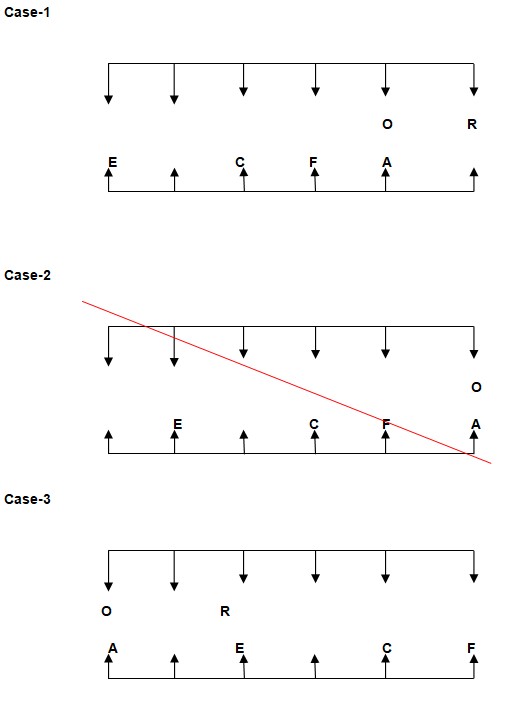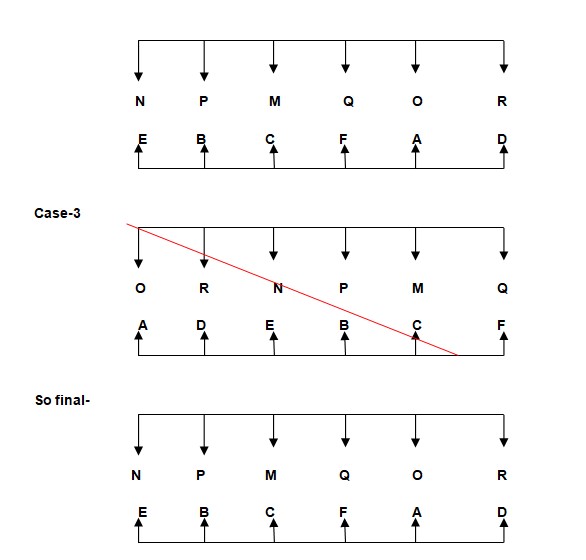Question
How many persons sit between A and D?
Read the given information carefully answer the questions given below. Twelve people are sitting in two parallel rows facing each other. In Row I: A, B, C, D, E and F are facing North, while In Row II: M, N, O, P, Q and R are facing South, but not necessarily to be in the same order. E sits second to the left of C, who is an immediate neighbour of F. A faces O, who sits immediate right of R. R neither faces C nor faces E. F is not an immediate neighbour of E. N sits second to the right of M, who does not face F. P neither faces D nor faces F. Not more than one people sit between Q and O.Solution
E sits second to the left of C, who is an immediate neighbour of F. F is not an immediate neighbour of E. R neither faces C nor faces E. A faces O, who sits immediate right of R.  N sits second to the right of M, who does not face F. P neither faces D nor faces F. Not more than one people sit between Q and O. Case-1
N sits second to the right of M, who does not face F. P neither faces D nor faces F. Not more than one people sit between Q and O. Case-1 
Recently which of the following e-commerce company partners with Pocket FM to enter the audiobooks segment?
What percentage of India’s GDP is contributed by MSMEs?
What major governance initiative does India plan to host in 2024 that emphasizes its commitment to global environmental governance?
An Registrar and Transfer Agents ( RTA) would be categorized as QRTA if at any time during a financial year, the combined number of physical and demat f...
The RBI approved the candidature of Baldev Prakash as Managing Director and Chief Executive Officer of ________ for a period of three years.
What does the strategic importance of the Nimmu-Padam-Darcha road signify for Ladakh?
Under the FEMA norms issued by RBI for direct listing on international exchanges, where must the proceeds from the sale of equity shares be remitted or ...
Who were invited as "special guests" to witness the Republic Day Parade, 2024, and under which scheme?
For the street animal, India’s first ambulance service has been started in which city of the country?
What is the name of the new NATO land command to be set up in Finland?
Relevant for Exams:



